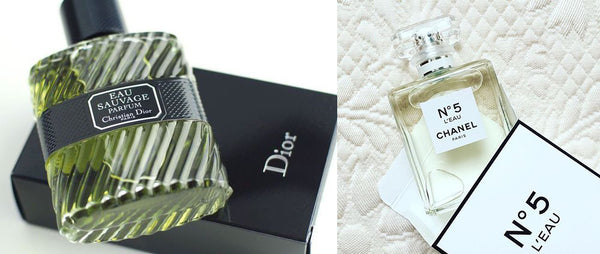Popular Searches
- Citrus
- Vanilla
- Floral
- Orange
- Fresh
Popular Products
View All Search Results

July 24, 2017
In today’s world, there is an increasing popularity in organic food options, eco-friendly detergents and greater awareness and concern for the environments we live in. It’s no surprise natural ingredients are top of mind with consumers for fragrance products. However, did you know that synthetic ingredients can be better for you – and the environment?
Synthetic ingredients, typically comprising about 70 percent of the ingredients in wearable fragrances, have been integral to perfuming for a century and a half. Synthetics have been essential in iconic fragrances from Chanel No. 5 in the early part of the 20th century to Christian Dior’s Eau Sauvage in the 1960s to Issey Miyake’s L’Eau d’Issey in the late 1990s.

If fragrance designers were once skittish about highlighting the synthetics in their concoctions - that is increasingly not the case. Indeed, for sundry reasons, fragrance designers who have long made use of them are embracing and celebrating synthetic ingredients that have too often been inaccurately associated with cheapness - or of a lesser quality in the minds of customers.
“Some of the molecules we use are, in fact, way more expensive than some naturals,” says Firmenich Senior Perfumer Frank Voelkl.
Pierre-Constantin Guéros, perfumer at Symrise, agrees: “The notion of “cheap” once again has for me nothing to do with natural or synthetic,” he says, “as orange can be perceived as “cheap” (but is natural) and Ambroxan as luxurious.”
The people who design fragrances like synthetics for a host of reasons. For one, synthetics can accomplish things natural elements simply can’t. For example: rose oil, though pleasant, cannot actually convey the smell of a rose in bloom—but synthetics can. Synthetics are also crowd pleasers. “People who usually hate fragrances love these,” says Nomenclature fragrance line co-founder Karl Bradl, “because they're very sheer and transparent.”
It’s for the same reason that synthetics are more likely to be hypoallergenic: because they are made from simpler compounds than naturals. “Synthetics are simplified molecules,” says Nomenclature co-founder Carlos Quintero. “[Perfumers] can purify them until they get a well-tested non-allergenic molecule. With naturals, there are many more elements that can cause allergies, because they are more complex.”

And finally, synthetics are very often a lot better for the natural world than natural ingredients. Getting natural musk requires a lethal extraction process from a musk deer, just like natural civet means harvesting the stuff from the anal glands of an endangered exotic cat. Synthetic substitutes have spared the lives of many a Sandalwood tree.
The perfumers and scent designers behind Aera’s fragrances create with an unrestricted palette of pure fragrance ingredients. Our home fragrances contain a blend of both natural and synthetic ingredients that are selected to convey the true artistic scent inspiration the perfumer intended. And with Aera’s patented fragrance diffusion technology, the scent effect is hypoallergenic, because each microscopic scent droplet (1/50th the diameter of a human hair) is converted instantly to a dry vapor that is dispersed into the air with less than one fragrance molecule for every million molecules of air.
Candles and incense can create a special ambience, but they are not hypoallergenic. The smoke and hydrocarbon chemicals make them ill equipped for regular home scenting. Scenting devices like plug-ins and diffusers are also not hypoallergenic. They also emit small water droplets still large enough to host stowaway bacteria into the air and your lungs. Only Aera offers beautifully designed home fragrances and a safe scenting system finely tuned to fragrance your home customized to your preferences.